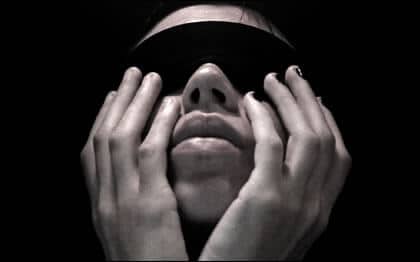With the use of verbal stories, a researcher from Johns Hopkins University has found that the brains of people born blind respond to situations similarly to the way people with sight do.
Marina Bedny, a Johns Hopkins brain scientist in the university’s Krieger School of Arts and Sciences, found that congenitally blind people have knowledge of situations perceived by sight in much the same way as people with vision</a>. She said this ability may be due to the daily interaction blind individuals have with sighted people. The results of the study highlight the commonalities in how sighted and blind people think about the world.
Bedny and her fellow researchers—Jorie Koster-Hale and Rebecca Saxe of the Massachusetts Institute of Technology’s Department of Brain and Cognitive Science—report their findings in a paper recently published in the journal Cognition. The three researchers found that blind people use a sort of neural empathy to understand situations that others can see, but they themselves have no first-person experience with. Koster-Hale and Saxe were the lead and senior authors on the paper respectively.
“The question we are interested in is where does knowledge come from? To what degree does our knowledge about other people come from our own first-person experiences?” said Bedny, an assistant professor in JHU’s Department of Psychological and Brain Sciences. “We chose to work with the blind community in this research because the sensory experiences of blind individuals differ dramatically from the experience of sighted people. On the other hand, the social experiences of blind and sighted people are largely similar.”
The researchers wrote about whether hearing a story in which sight plays a strong component in the storytelling is processed differently by the congenitally blind group than by the group with sight. One example is seeing a romantic partner from a distance get into a car with another woman.
“Clearly, a blind adult would understand the emotional toll of discovering a lover’s possible betrayal, but could a blind person make the same inferences about the visual source of the discovery?” the paper states. “How much would a blind person understand about the experience of seeing a familiar person and a strange woman, from afar, in the dark?”
Despite the lack of vision, it turns out the brains of blind people can infer a lot.
Researchers studied two groups of people—those with sight and those born without. Each group was told 32 stories, with each lasting 13 seconds. Half of the stories used sight as an action (“Gladys sees a note on her front door”) while the other half had hearing as the action (“Gladys hears a new telephone message”).
Each of the stories also included outcomes that were either good or bad for the main character. For example, one story said, “I look forward to seeing you tonight,” while another said, “Sorry, I can’t make it tonight.” Blind and sighted participants judged how the main character in the story felt—happy, sad, or indifferent.
Using a functional magnetic resonance imaging (fMRI) machine to measure neural responses, the researchers found no significant differences in how the brain encodes the different combination of stories told for the sighted or blind individuals.
Bedny said there are two prominent theories for how people understand experiences. One is through simulation in which a person imagines himself in a particular situation by using a previous or similar event from his own life. The second is called intuitive theory, which takes a series of previous actions and responses not personally experienced and infers how a person would react. The current findings suggest that both blind and sighted people rely on intuitive theories to reason about other people’s mental states.
“By studying naturally occurring variations in peoples’ experiences, we gain insight into the foundations of what makes us all human,” Bedny said. “We all have different lives. Our job as scientists is to pick up on systematic differences that we can study.”


